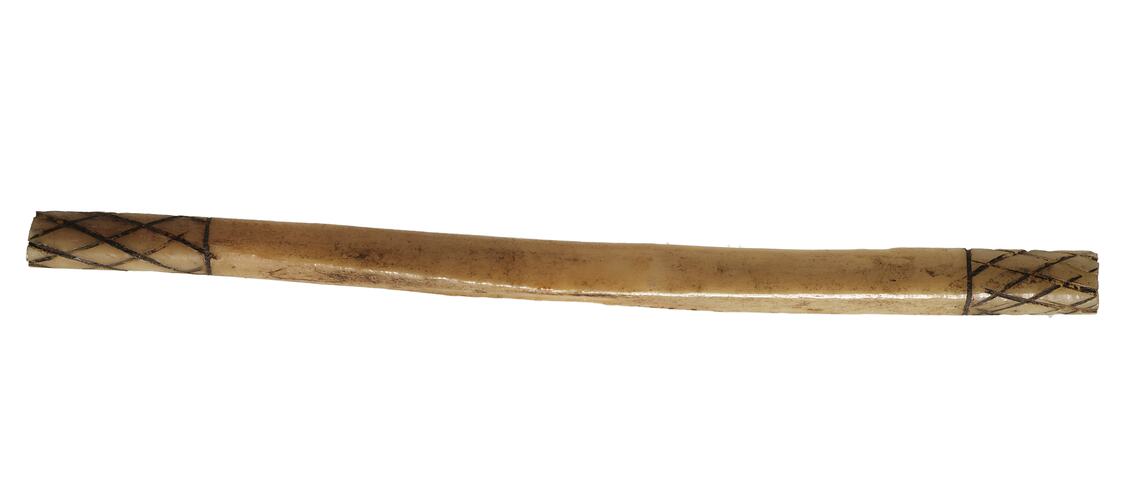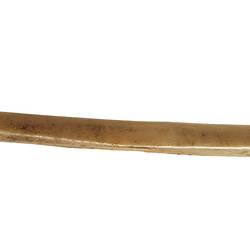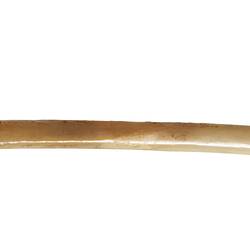Summary
This nose ornament was made and used by the Wurundjeri people of the Woi Wurrung language group.
The Wurundjeri children were around 12 years of age when they underwent nose perforation. A male Elder performed the operation on boys, and a female elder on the girls. Following the piercing, the child dug a small hole in the ground, into which they placed stones that had been heated in the fire. The stones were covered with earth and water poured on top. Covering their head with a possum skin rug, they stood over the wet earth until steam loosened the nose peg and it could be rotated. This process was repeated morning and night until the nose healed.
Nose ornaments were often quite long and most often made from kangaroo bone or Djarg (Kulin name for common reed). During ceremonies when dancers stood in a row, the nose ornament gave the appearance of a continuous line linking the dancers together.
Local Name
Nautekauer
Physical Description
Hollow bone with ornamental marks.
Significance
First Peoples men and women from a multitude of groups around Australia also wore nose pegs of bone, wood, quill, shell and reed stem for ceremonial and everyday ornamentation.
Wurundjeri ceremony and culture was captured and documented by Wurundjeri Ngurungaeta (headman) William Barak. Barak's descendants continue to practice and share their culture and language. Wurundjeri Elder Aunty Joy Wandin Murphy speaks of Barak's beautiful depictions of Wurundjeri life and ceremony at the time of colonisation;
'I believe that he painted the living things. He wanted people to remember those ceremonies.' Aunty Joy Wandin Murphy, 2010.
References
Keeler, C. and Couzens, V., (eds) 2010, Meerreeng-An, Here is my Country: The Story of Aboriginal Victoria Told Through Art, p. 7, Koorie Heritage Trust/ BPA Print Group.
More Information
-
Object/Medium
Ornament, nose
-
Maker
-
Locality
-
Date Produced
-
Object Measurements
105 mm (Length), 5 mm (Width), 5 mm (Height)
-
Classification
-
Date Made
-
Maker
-
Clan/Language Group
-
Place Made
-
Indigenous Region
-
Keywords
-
Acquisition Information
Purchase from (Estate of) Henry A. Smith, Mr H F. Richardson, 07 May 1888
-
Collection Names
-
Type of item
-
Discipline
-
Category
-
Collecting Areas


